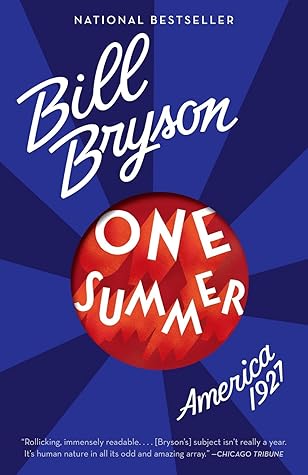More on this book
Community
Kindle Notes & Highlights
By the spring of 1917, the life expectancy of a British pilot was put at eight days.
The 1920s was a great time for reading altogether—very possibly the peak decade for reading in American life. Soon it would be overtaken by the passive distractions of radio, but for the moment reading remained most people’s principal method for filling idle time.
The American fliers also had an advantage over their European competitors that nobody yet understood: they all used aviation fuel from California, which burned more cleanly and gave better mileage. No one knew what made it superior because no one yet understood octane ratings—that would not come until the 1930s—but it was what got most American planes across the ocean while others were lost at sea.
The nation’s inattentiveness notwithstanding, the Mississippi flood of 1927 was the most epic natural disaster in American history in extent, duration, and number of lives affected.
By 1917, it was reckoned that Hoover had saved more lives than any other person in history. One enthusiast called him “the greatest humanitarian since Jesus Christ,” which of course is about as generous as a compliment can get. The label stuck. He became to the world the Great Humanitarian.
By the time of Lindbergh’s flight, one-third of all the money America spent on furniture was spent on radios.
The great Mississippi flood of 1927 had two lasting legacies. First, it accelerated the movement of blacks out of the South in what is known as the Great Migration. Between 1920 and 1930, 1.3 million southern blacks moved north in the hopes of finding better-paying jobs and more personal liberty. The movement transformed the face of America in a decade. Before the Great Migration, only 10 percent of blacks lived outside the South. After the Great Migration, half did.
Between 1905 and 1914, ten million people, mostly from southern and eastern Europe, poured into the United States—a country that had only eighty-three million people to begin with. The numbers of immigrants changed the face of urban America utterly. By 1910, immigrants and the children of immigrants made up almost three-quarters of the populations of New York, Chicago, Detroit, Cleveland, and Boston.
As Lindbergh was discovering, it was a lot more fun to get famous than to be famous.
H. L. Mencken called it “the one authentic rectum of civilization,” but for most people Hollywood was a place of magic.
With American speech came American thoughts, American attitudes, American humor and sensibilities. Peacefully, by accident, and almost unnoticed, America had just taken over the world.
Altogether at least sixty thousand people were sterilized because of Laughlin’s efforts. At the peak of the movement in the 1930s, some thirty states had sterilization laws, though only Virginia and California made wide use of them. It is perhaps worth noting that sterilization laws remain on the books in twenty states today.
Chicago was to corruption what Pittsburgh was to steel or Hollywood to motion pictures. It refined and cultivated it, and embraced it without embarrassment.
Lindbergh’s flight, it has been calculated, spurred as much as $100 million in aviation investments in America.


